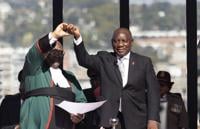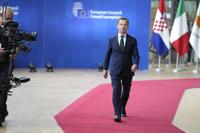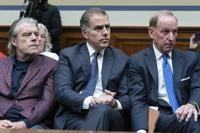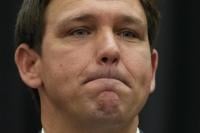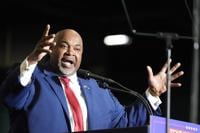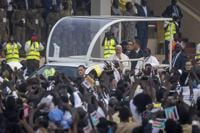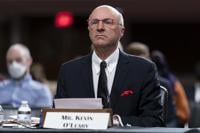CAPE TOWN, South Africa (AP) — South African President Cyril Ramaphosa named a new Cabinet late Sunday night after his African şÚÁĎłÔąĎÍř Congress, the former main opposition party, and nine other parties agreed on the makeup of a coalition government following weeks of haggling.
Ramaphosa's party retained the largest share of ministerial positions as he appointed ANC officials to 20 of the 32 Cabinet minister roles in the new coalition. But there were six ministers from the Democratic Alliance, once the main opposition and the fiercest critic of the ANC, and Ramaphosa shared out the remaining ministerial posts among some of the smaller parties.
Ramaphosa's announcement of his new, multi-party Cabinet came a month after the ANC of Africa's most industrialized country in a national election, forcing it to seek coalition partners. The ANC's share of the vote slumped to 40% in the May 29 vote and it lost its parliamentary majority for the first time since it came to power at the end of the in 1994.
The DA won the second largest share of the vote with 21%.
Others have also joined what the ANC called a government of national unity that is open to any of the 18 parties represented in Parliament. Some have refused to take part.
is unprecedented for South Africa. The country briefly had a coalition government at the end of apartheid, but that was under different circumstances. The ANC held a clear majority then after the first all-race election, but new President Nelson Mandela invited others into his government in an act of reconciliation.
This time, the ANC needed the help of lawmakers from the DA and other parties for a second term.
South Africans deserted the ANC in the landmark national election amid frustration over poverty and some of the highest rates of inequality and unemployment in the world, and Ramaphosa said Sunday that those issues would be priorities for the coalition government.
While there are 11 parties in the coalition, — which were ruling party and main opposition for years — are the two largest and the key players. Talks between them have been tense and drawn out and the DA was reportedly on the verge of walking away from a power-sharing agreement until a meeting between Ramaphosa and DA leader John Steenhuisen on Friday.
"We have shown that there are no problems that are too difficult or too intractable that they cannot be solved through dialogue," Ramaphosa said, noting the negotiations had been complex.
In some of his most significant Cabinet decisions, Ramaphosa reappointed Paul Mashatile of the ANC to continue as his deputy president. Ramaphosa also appointed Parks Tau of the ANC as the minister of trade and industry, an important portfolio that the DA was seeking and was at the heart of between the two parties.
DA leader Steenhuisen was appointed minister of agriculture, while Ramaphosa also brought the leaders of four other political parties into his Cabinet as new ministers.
“We have had to ensure that all the parties are able to participate meaningfully in the national executive,” Ramaphosa said.
___
AP Africa news:


